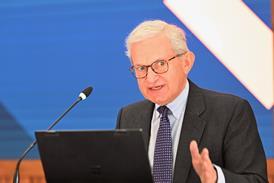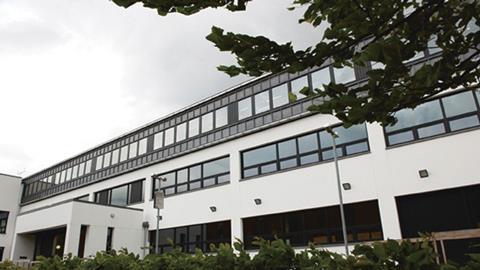Top City firms stand accused of inhibiting access to justice by charging record fees and failing to be transparent about costs. Rachel Rothwell reports.
Rarely does a story about law firms top the web traffic chart of the Financial Times.
But a report on City legal rates – asserting that some partners are now billing clients more than £1,000 an hour – caught the attention of the national press this month, receiving widespread coverage in the FT, Times, Independent and other papers.
The research, by freemarket thinktank the Centre for Policy Studies, claims that partner rates are now the highest ever recorded. It cites a lack of transparency on fees, and shortage of competition between firms, as two factors driving rapid increases – and warns that access to justice is being affected.
The report even points to ‘the remarkable similarity’ in magic circle rates as an indication that the market is not functioning properly, though it stresses that there is no suggestion of ‘collusion’ between firms.
So are the criticisms in the report fair, or is the reality on the ground somewhat different?
First, how fiercely are City firms competing for work? Is it a real fight, or a merely a carefully choreographed wrestling match in which the participants are not really trying to harm one another?
The Law Society’s head of City and international Stephen Denyer is in no doubt as to the authenticity of the competition. He points out that, as shown in the Law Society’s recent Future of Legal Services report, City firm clients ‘negotiate hard on fees and are continuously changing their buying habits, stimulating vigorous and healthy competition’.
Alasdair Douglas, chairman of the City of London Law Society, asserts that top commercial law firms operate in an ‘intensely competitive market’ both domestically and internationally, with ‘many firms vying for the same work’.
Douglas insists ‘there is no cartel of a few UK firms sharing the work out between them’.
He adds: ‘In fact at least 30 firms, US- and UK-based, have the scale, international reach and resources to do most commercial work. That high level of competition has a major impact on determining fees.’
For pricing expert Richard Burcher, managing director of pricing consultancy Validatum, the headline rate of £1,000 an hour is not something to get agitated about in any event. ‘If firms really are charging £1,000 per hour – good on them,’ he says. ‘I do not mean that in a cavalier way; the number of partners who can quote, charge and collect £1,000 per hour would be a very small minority. There is a QC in the oil and gas sector who commands £1,500 per hour, and he is booked up until the end of next year. If he weren’t worth it, they wouldn’t pay.’
He adds: ‘The legal profession operates in the same free market as everyone else; from Harrods to Borough Market. You make something and you sell it for as much as you think people will pay for it. After all, we have been telling law firms to run themselves more like businesses.’
There is a parallel here in the sphere of accountancy. At the end of 2014, the so-called ‘Big Four’ audited 95% of the world’s biggest companies and FTSE 100 audit tenders are a merry-go-round upon which only that elite quartet commonly ride. They have long had to fend off criticisms that they simply swap mandates every now and then, but counter that only they have the global reach and investment clout to audit the biggest multinationals.
What about the top legal echelon? Is there some work where only a magic circle brand will do – either because of the complexity, the international reach, or simply because it is safe choice for the board? And because the sky-high fees effectively come out of the shareholders’ pockets?
Burcher says: ‘There will always be the “bet the company” stuff, where the magic circle can name their price. At the moment I am advising on a matter that involves interests in an African oilfield. If the client wins, it will make huge profits from exploiting the oil rights. If it loses, it will go into liquidation. There’s no halfway house.
‘That is the kind of situation where the client doesn’t care what it costs. They just want the best. It is not about cutting corners or cutting some money off the hourly rate.’
He adds: ‘But there’s an awful lot of work that the magic circle do that is not “bet the company” stuff and could be done by the next tier down. So they still can’t afford to be complacent. Complacency never serves us well in business; there is always someone snapping at your heels. If the next level down are being innovative, there is a risk that those firms begin to attract the attention of buyers of legal services.’
It is not just the silver circle and below that pose a threat to the magic circle giants; there are also the interlopers from across the Atlantic.
Fear of the ‘underclass’
Last month Lord Justice Jackson proposed a large-scale extension of fixed recoverable costs to all civil cases worth up to £250,000, including commercial litigation.
The move would give clients certainty over their opponent’s costs, but would mean they will recover a lower amount from the other side when they win. Law firms are expected to charge their clients an additional amount which will come out of the client’s own pocket.
Richard Burcher, managing director of Validatum, says City lawyers have reacted with ‘anger and disbelief’ at the proposals. He adds: ‘Fixed fees can be made to work when they are drawn up on an individual basis. But this is driven purely by financial parameters [with the level of fixed fee dependent on the value of the claim], taking no account of a claim’s complexity. There’ll be some horrible anomalies and distortions, and an underclass of people who are entitled to their day in court, but no one will take them on.’
Tony Williams, founder of Jomati consultants, adds: ‘If this comes in at the £250,000 level, that will apply to the vast majority of disputes. That will be a challenge, because firms will know that the most they can recover from the other side will be X, and if they want to charge more, they will have to explain that to the client, who will have to pay more. One consequence is that it will force clients to use mediation earlier.’
‘The Americans are coming,’ Burcher warns, ‘and some of them are beginning to eat the magic circle’s lunch. US firms have been growing their presence out of all proportion to the rate that the market is growing, so they are clearly taking work from the incumbents.’
What is more, US firms are ahead of the game in terms of devoting resources to pricing.
‘In the UK top 100, firms that have someone who is a dedicated and properly skilled pricing director are few and far between; you could count them on the fingers of one hand,’ Burcher says. ‘Yet 92 of the US top 100 have someone in that role. And their salary ranges from $200,000 to $450,000; so these are heavy-hitter roles. The top-end of the UK market cannot afford to be complacent.’
But what about conflicts rules – can these lead to a lack of choice over providers on a big deal, allowing the big firms to fatten their rates? Not according to Paul Gilbert, chief executive of LBC Wise Counsel, a consultancy for in-house lawyers.
He says: ‘There are hundreds of credible law firms. If a sophisticated client has an issue with conflicts, they should be bold enough to tackle it head on. If they do not get the answer they want, there will be a very credible alternative provider.’
He adds: ‘There are enough firms and enough clients to ensure a very competitive market. If there is a perception of a lack of competition, then perhaps the clients need to drive the market harder. In the space of City or national law firms, we are brilliantly served in this country.’
Access to justice
The author of the Centre for Policy Studies report, costs expert Jim Diamond, has warned that high rates charged by the top firms risk creating inflation throughout the system, with second- and third-tier firms also boosting their rates. That could make it harder for small businesses to access the legal system.
But this argument is rejected by Burcher, who says: ‘You might see that “capillary effect” of fees being drawn upwards if it were a homogenous market. But there is a firebreak between the magic circle and the rest of the profession. Everyone has a law degree, and that’s about it. Whatever happens in the magic circle has absolutely no impact on pricing in the rest of the market.’
Tony Williams, founder of Jomati consultants and former managing partner of Clifford Chance, adds that even smaller clients are now exerting pressure over price. He says: ‘Since the downturn, clients have realised that they have got buying power. Even small users can still shop around and ask, “what will you do it for?”. There are enough law firms in the market for proper competition.’
Denyer, who was a partner at Allen & Overy before joining the Law Society, adds: ‘Access to justice for small businesses is not affected by the fees charged by elite London law firms. The global legal services market is distinct from the market that serves smaller and medium-sized British businesses, which have very different legal needs. This market is in turn distinct from the consumer market, which is again served by other firms.’
So the consensus seems to be that competition is alive and well in the market, and clients are getting much more feisty in making demands on their lawyers. But pleasing the client is not about offering rock-bottom rates. What businesses truly want is transparency – and certainty – over cost, even if that means ultimately paying a bit more.
Out of sight, out of mind?
In a report released this month, Jomati Consultants examined how law firms are changing the way they operate in order to bring down costs. One key trend identified in the report is the rise of low cost centres (LCCs) operated by law firms. Often ‘low key’, these internal, non-client-facing support offices are not always mentioned on the law firms’ websites – and there has been a marked rise in their deployment over the past two years.
International firms with LCCs include Linklaters and DLA Piper, which have back offices in Warsaw; Allen & Overy, Herbert Smith Freehills (pictured) and Baker & McKenzie, which have LCCs in Belfast; and Freshfields Bruckhaus Deringer, Berwin Leighton Paisner and Latham & Watkins, with LCCs in Manchester. Hogan Lovells has set up an LCC in Birmingham, and Ashurst has one in Glasgow.
Burcher notes that some firms can appear to be transparent about costs, by being open at the outset about their hourly rate. But if they will give no indication about how many hours they are likely to bill for a piece of work, then the client is effectively none the wiser.
Client Christopher Digby-Bell, deputy chairman at Palmer Capital Partners and former general counsel, remarks that law firms are now ‘only too aware that they are operating in a highly competitive market and that the billable hour is gone for ever’.
He says that in most areas of practice, ‘it is still a buyer’s market for legal services, which is forcing firms to get better at fixed fees’. When it comes to obtaining value for money from law firms, Digby-Bell adds that this ‘is largely a product of two things: the precision of the brief and the quality of the relationship with the law firm’.
While for Digby-Bell the billable hour may have gone the way of the dinosaur, for other clients it does still walk the earth – albeit on a tight leash, and having evolved into a much tamer creature.
As Williams explains, where costs are not capped or fixed, clients will still accept discounted hourly rates. But whereas in the US the discount can be somewhat artificial, over here it is more meaningful.
‘It is not as though the buyer is giving the law firm free rein,’ explains Williams. ‘It might be a discounted hourly rate, but the client will do a detailed review of the hours you do, and will be hard-nosed about it. It is not a licence to print money.’
Williams notes that some clients have been particularly active in pushing firms on price, citing the ‘reverse auctions’ run by RBS as an example. In a reverse auction, law firms are pitted against one another in an online ‘chatroom’ to compete for work.
The consultant also notes that, in 2014, magic circle firm Slaughter and May was prepared to work on a fixed fee for Vodafone, in a huge deal in which the telecoms giant sold a $130bn stake in Verizon Wireless. For a traditional firm such as Slaughters to commit to a fixed price on a deal of that size shows just how commonplace fixed fees have become.
‘If a firm claims to be an expert because it has done, say, 30 of the same type of [deal or case] before, it cannot then claim that it has no idea how much it will cost,’ Williams reflects. ‘Law firms really are expected to give fixed costs now, either for the whole job, or at least for specific phases.
‘But one of the important things that firms do need to be doing is a postmortem on work – looking at what they expected the job to cost them, and what was the actual outcome.’
Law firms have also been getting better at reducing their own costs (see box, bottom). Williams explains: ‘Firms have been looking at their cost bases, for example how they can delegate work to people who are cheaper within the firm; their support ratios, secretarial or other staff; their use of precedents or re-use of materials.
‘Everybody has been looking at how you can do things quicker, cheaper and more effectively than in the past. And why shouldn’t they?’
But are these economies filtering through into lower fees, or simply being used to bolster the firms’ profit margins? ‘For the most part, the savings are being passed on to the client,’ Williams insists.
Now that fixed or capped fees, and discounts, have become the norm, is it time for more pricing innovation from the legal sector?
First, a word of warning from Gilbert for clients who simply expect law firms to ‘innovate’ without being part of the process: ‘Law firms are far more transparent than they have ever been, and are usually incredibly responsive. But innovation is a two-way street. If clients do not contribute enough, it is a bit like sitting in front of a comedian with arms folded and a sceptical face, saying “go on then, make me laugh”.
‘If clients are in effect saying “go on then, be innovative”, it will most likely fail. If clients are more involved there will be more innovation. But it is also important to realise that if clients buy without seeking change, there is very little incentive to change. Any relationship gives the outcomes that it does because of what people do, not what they wish for.’
Burcher is already looking ahead to where law firm pricing will go next. He believes the future is all about sharing the client’s upside, as well as taking on the risk of the downside.
‘We are already seeing pricing frameworks that better align the interests of clients and law firms, with the law firm taking on more of a risk element,’ he reports. ‘Clients expect the firm to take a fair bit of hurt when it doesn’t go well. But historically firms have not [had a share in] the upside.
‘In contentious work there has always been risk-sharing through conditional fee agreements, or now, to a lesser extent, damages-based agreements. But what we are encouraging our clients to do is to engage more effectively with risk-sharing around the client upside in non-contentious work. It could be, for example, planning consent on a new development, or how much money was raised in an IPO – things where the lawyer has been instrumental in the outcome. But it is not yet happening anywhere near as much as it should be.’
One thing is for certain: now that clients have realised their buying power, there will be no return to the blank cheque of the old days.
‘In a consumer society, people expect any profession to say what things will cost,’ Williams says. ‘Law firms cannot expect to be immune from these pressures.’
Rachel Rothwell is editor of Gazette sister publication Litigation Funding






























4 Readers' comments